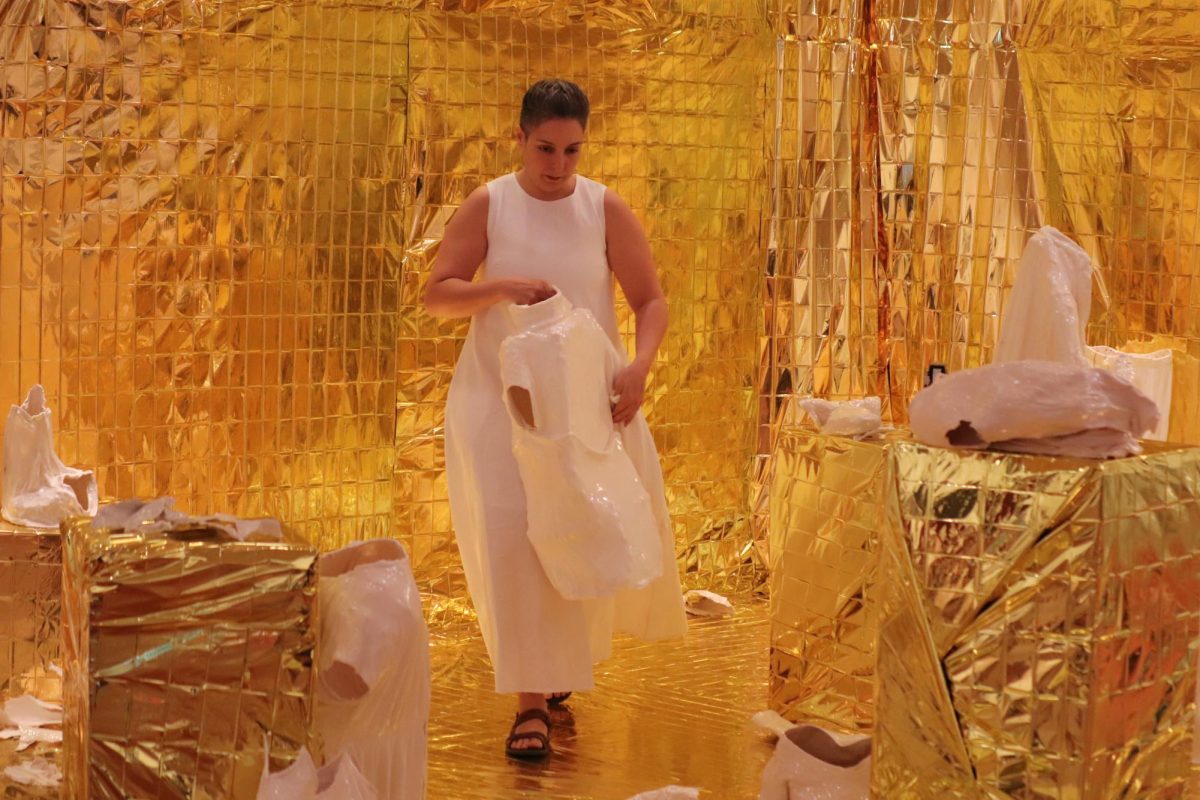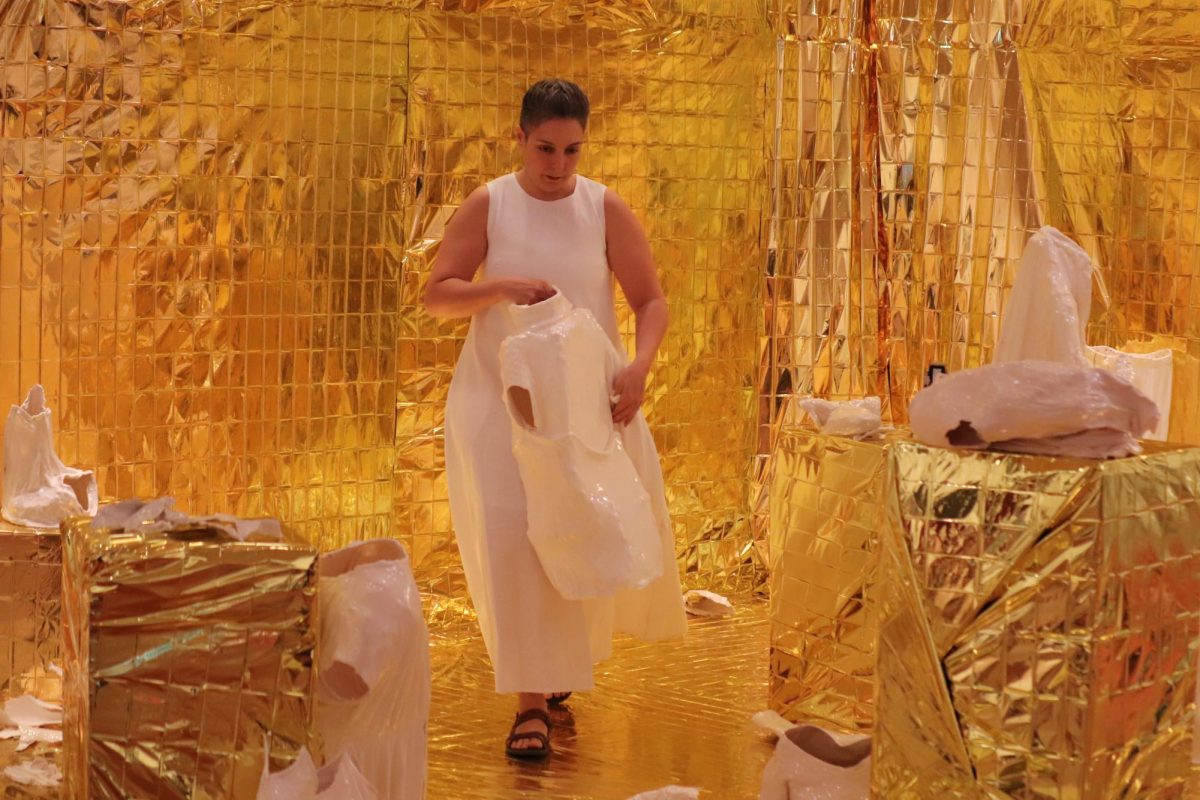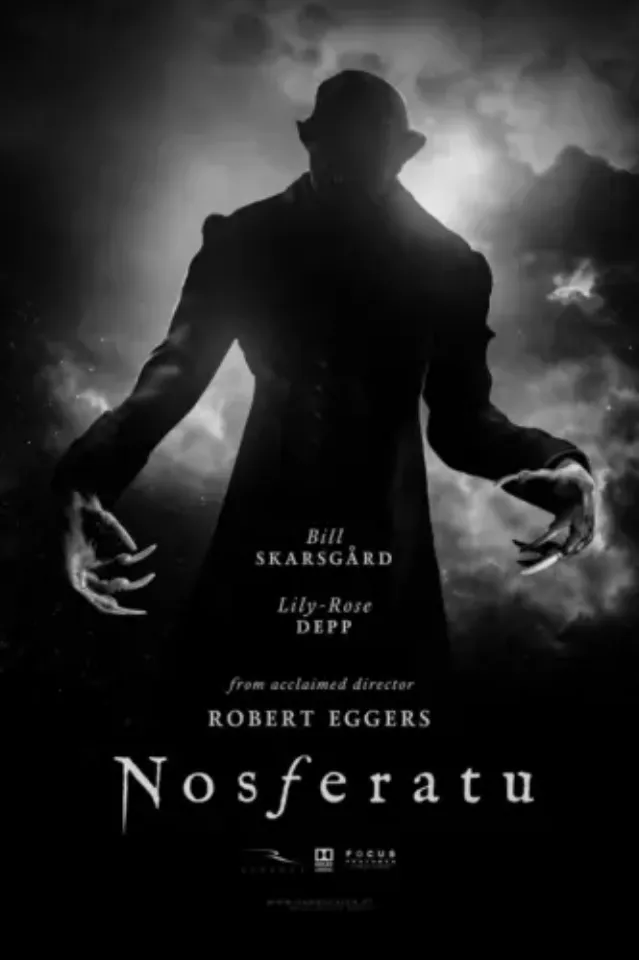The Homebound art exhibition took place at Skyline College’s Art Gallery starting Sept. 30th until Nov. 15th. The overarching theme of the exhibition was home and the different iterations the concept comes in.
The exhibition included a campus reception, artist reception and artist panel which included artists Kimberley Acebo Arteche, Lara Aburamadan, and Fadl Fakhouri.
According to curator of the exhibition and Professor Kathy Zarur, the vision of the exhibition was to explore the different forms of the concept of home; that being something from the cultural ties to home to not being able to leave your home. She said, “I felt like those two opposing meanings made it a very rich space to explore different ways that artists relate to having a home or not having a home.” She also stated that bringing together different cultures and perspectives through a common theme, like home, was part. She states she “wanted everyone to be able to find something in the exhibition” through representing different perspectives. She wanted the exhibition to serve as a place for all viewers to be able to explore their own relationships to the theme of home.

The exhibition included pieces of different media from different artists as listed of a few below:
Kimberley Acebo Arteche created the series of pieces “Naglalaban siya (She fights).” The piece is a multimedia installation that includes uses of acrylic paint, marker, digital prints, and a Filipino-made fabric called “Bantagas bordado” in Tagalog. Her piece focuses on the symbolism of work that Filipina women have been putting into families. During the artist panel she said she wanted to “transform the way we [Filipino women] are expected to exist within our families” by using Bantagas bordado because it is so connected to her heritage and can represent her cultures values and expectations.
Lara Aburamadan created a series of photographic prints on enhanced matte paper, depicting self-portraits during the COVID-19 pandemic lockdown. Her photos depict a connection between the space of a home and its ability to cultivate creativity. Also as a Palestinian, Aburamadan’s photos display “private meditations on longing for Simple Pleasures like the taste of sweet Palestinian grapes at a picnic on the beach in Gaza City.”
Fadl Fakhouri’s “Home” consisted of paint, peephole, doorknob, keys, and a mousetrap. As a Palestinian-American, Fakhouri’s piece focuses on the struggle of the concept of home for the Palestinian people through denied entry. Each piece of his art is symbolic of this experience; living in exile, and what it means for the Palestinians to find home. During the panel Fakhouri spoke about his piece and said it was “meant to be an illusion because that is how home [feels] to me.” According to Fakhouri, home is “not tangible” especially regarding his home in Palestine where the majority of his family still lives.
Elizabeth Dorbad included mixed media sculptures called “Itinerant Architectures,” which are reworked remnants of abandoned trailers, and brings light to the human imprint on the “decay of the physical.” Dorbad uses parts that would normally be thrown away, and turns them into abstract art. Her piece focuses on the themes of nomadism, frontierism, ecology, and art history.
Megan Wilson used paper quilling on paper in her “Stains Series,” which is a collection of individual paper quilling pieces with a variety of colors. Each piece has red paint splattered throughout; the red paint representing the violence used against Native people in America. Wilson uses her familial background as inspiration, as it was her grandmother who had taught her the art of quilling yet her ancestry tells her that her family had a part in the killing of the Native people. Wilson’s piece is highlighting the history and a way to seek amends for what her ancestors have done.
The exhibition included even more unique pieces from artists, including Claudia Huenchuleo Paquien, Leyla Rzayeva, Gazelle Samizay, and Noga Wizansky.
For students who are interested in curation and art installation, there is a one unit class called Gallery Practicum. This class is taught by Professor Zarur and helps students get involved with installing art, events, and more!









